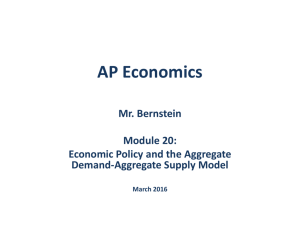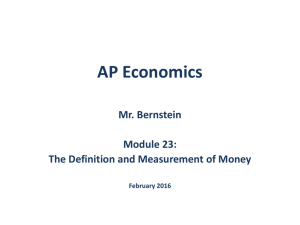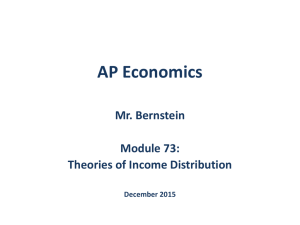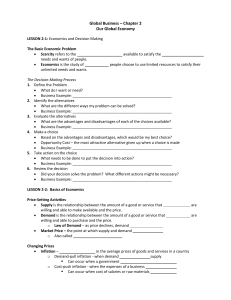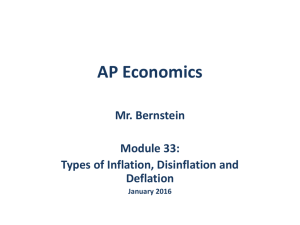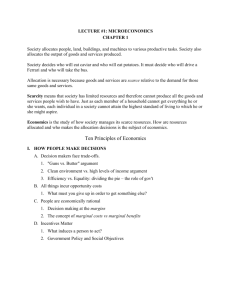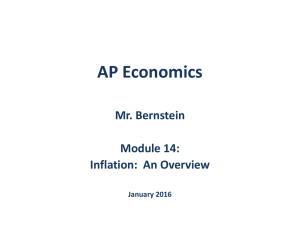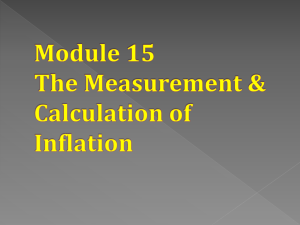Module 15 - the Measurement and Calculation of Inflation
advertisement
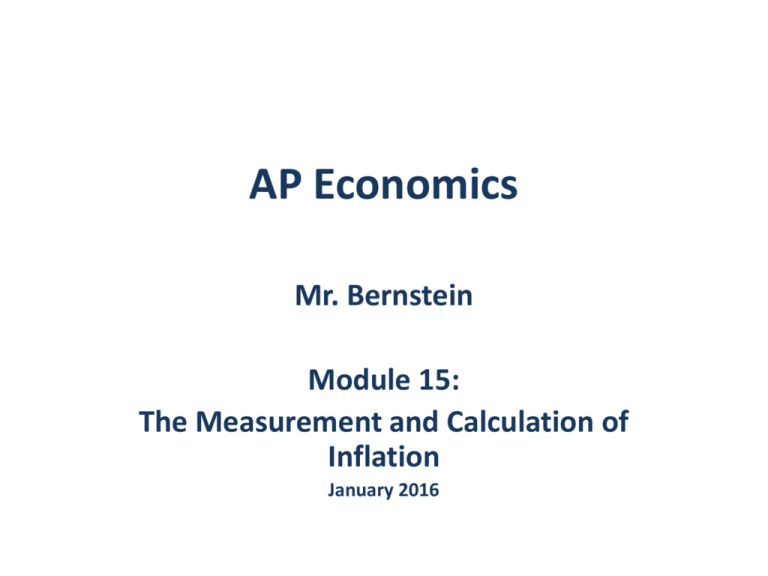
AP Economics Mr. Bernstein Module 15: The Measurement and Calculation of Inflation January 2016 AP Economics Mr. Bernstein Measurement and Calculation of Inflation • Objectives - Understand each of the following: • How the inflation rate is measured • What a price index is and how it is calculated • The importance of the Consumer Price Index and other price indexes 2 AP Economics Mr. Bernstein Price Indexes and the Aggregate Price Level • Market Basket is made up of typical goods and services purchased • Measuring broad level of inflation, not individual goods and services 3 AP Economics Mr. Bernstein Market Baskets and Price Indexes • Price index in a given year = (cost of the market basket in year t)/(cost of the market basket in the base year) • Inflation rate = percentage change between any two values of the index, ie (CPI2013 - CPI2012) / CPI2012 • Note: Index value in base year = 100 4 AP Economics Mr. Bernstein Example: The Deli Index Item in the Deli Basket Quantity Consumed in a Typical Year 2012 Price per Pound 2013 Price per Pound Corned Beef 300 $4 $6 Salami 200 $5 $7 Turkey 100 $2 $1.50 Cheese 500 $3 $2.50 • 2012 cost = (300*4)+(200*5)+(100*2)+(500*3)=3900 • 2013 cost = (300*6)+(200*7)+(100*1.5)+(500*2.5)=4600 • DPI (Deli Price Index) increased (4600/3900)-1 = ~18% even though 2 items actually declined in price 5 AP Economics Mr. Bernstein Consumer Price Index (CPI) • Computed monthly using a market basket of ~80,000 goods and services consumed by a typical urban family • Most widely used measure of inflation • Producer Price Index (PPI) measures inflation in inputs used by businesses rather than final products • GDP Deflator (Ratio of Nominal GDP to Real GDP) often used in same way, although technically its not an index. • Note: Base year for GDP is currently 2000 6 AP Economics Mr. Bernstein Coincidence of Inflation Measures 7
